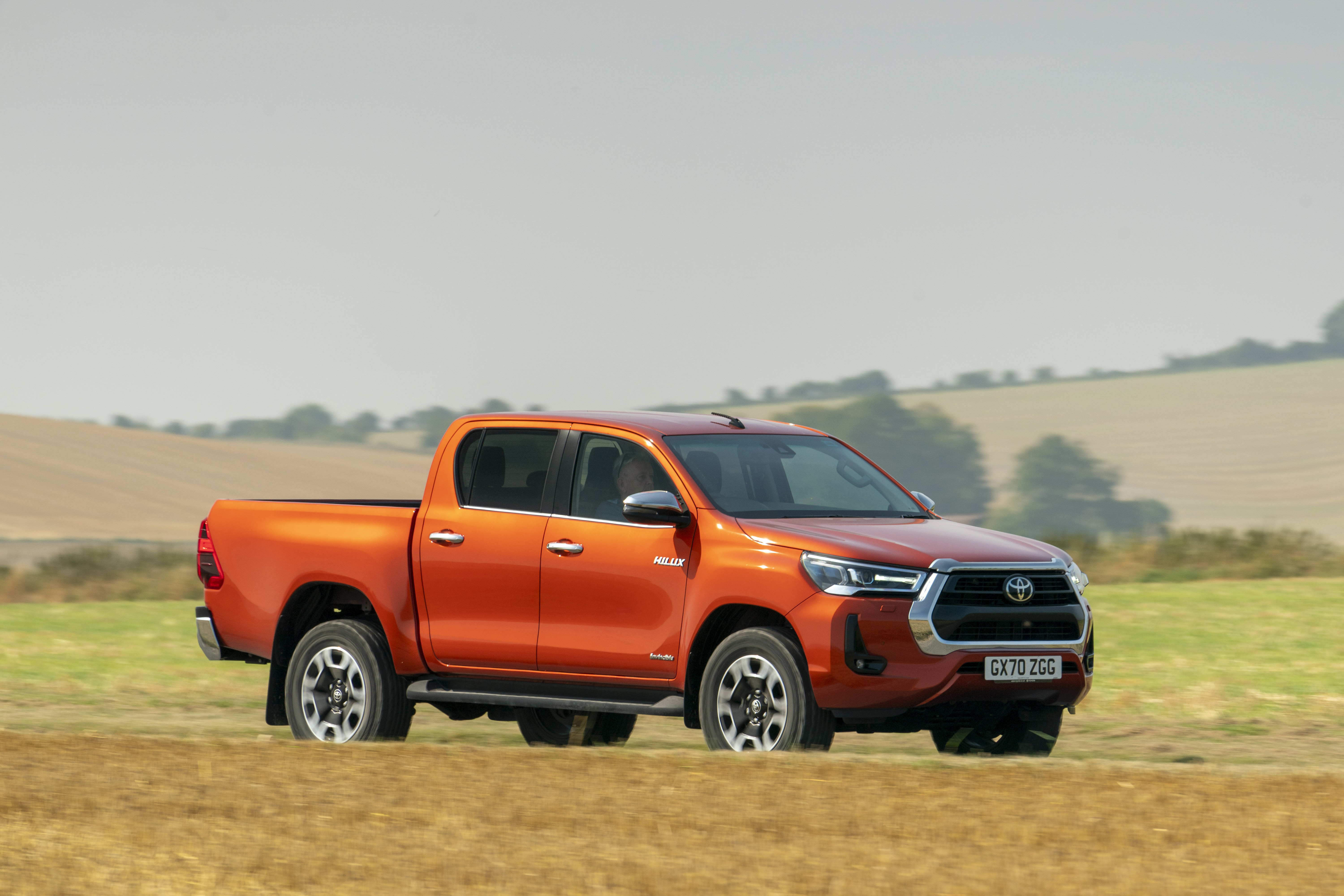Toyota Hilux vs Isuzu D-Max V-Cross — Specification Comparison
We thought of whipping up a few numbers and do an on-paper analysis of the D-Max V-Cross against the highly-awaited Toyota Hilux
 The Toyota Hilux competes directly against the Isuzu D-Max V-Cross
The Toyota Hilux competes directly against the Isuzu D-Max V-CrossThe Toyota Hilux has finally been launched after a long, long hiatus, which has resulted in everyone in the office fighting over who gets to go for the media drive (I highly suspect Toyota has a surprise for us at its off-road facility in Bangalore) provided the Covid situation doesn’t escalate. But until then, we thought pitting it on-paper against the Isuzu D-Max V-Cross. There cannot be a better time to crunch some numbers and analyse both these lifestyle pickup trucks on paper.
Toyota Hilux vs Isuzu D-Max V-Cross: Dimensions
Since these are lifestyle pickup trucks, we thought we’d begin with dimensions first, given that these cars are gigantic and can be a little intimidating in city conditions. The Isuzu may be a little short on length when compared to the Toyota Hilux, but it has a longer wheelbase. It also stands taller than the Hilux, and wears larger 255/60 R18 tyres. While the payload capacity of the Hilux is currently unknown, the D-Max V-Cross’ payload capacity is capped at 215kg (170kg on the 4x2, 180kg on 4x4 AT) due to the limit for weight carrying on a private vehicle.
Toyota Hilux vs Isuzu D-Max V-Cross: Powertrain, Transmission and Chassis:
The Toyota Hilux is built on the IMV platform that also underpins the Innova Crysta and the Fortuner, as a result of which the Hilux shares a lot of its mechanicals with. The Hilux’s powertrain is the same 2.8-litre turbo diesel from the Fortuner paired to a six-speed manual transmission or a six-speed torque-converter automatic. This powertrain puts out 201bhp and 420Nm of torque with the manual transmission, which goes up to a mammoth 500Nm of torque when paired with the automatic. The Hilux reaches a top speed of 175kmph and despite its heavier kerb weight, it can hit triple digits in an impressive 10.7 seconds.
The D-Max V-Cross’ 1.9-litre turbo-diesel unit was upgraded to BS6 norms last year, and we’ve reviewed it extensively — you can hit the link above to watch the review on our YouTube channel. This 1.9-litre unit produces 160bhp and 360Nm of torque, which is said to be about 13bhp more than in its previous iteration. Similar to the Hilux, the D-Max V-Cross also gets an option to choose from a six-speed manual and a six-speed automatic transmission. These numbers do seem way less intimidating when compared to the much higher figures of the Toyota Hilux, but do remember that these are lifestyle pickup trucks aren’t meant for outright performance.
Toyota Hilux vs Isuzu D-Max V-Cross: Off Roading
If you’re going to consider either of these two products, it’s safe to assume you will spend the occasional weekend getting dirty… on off-road trails (get your mind out of the gutter!). Toyota and Isuzu have equipped both their offerings with a decent amount of kit that will aid you in your off-road adventures. Both these cars get a proper 4x4 system with a low-ratio transfer case. However, the Isuzu can be had in a 4x2 configuration as well with the six-speed automatic transmission, which is priced at Rs 22.07 lakh (ex-showroom, Delhi), at a meagre price difference of just Rs 417.
The D-Max V-Cross comes with hill descent control, traction control, ABS with electronic brake distribution, brake override system, emergency brake assist, and electronic stability control.
The Toyota Hilux, meanwhile, will come with active traction control, an electronic differential lock, a tyre-angle monitor, an automatic limited slip differential, ABS with electronic brake distribution and more. Toyota also claims the Hilux has a water wading capacity of 700mm.
Toyota Hilux vs Isuzu D-Max V-Cross: Interiors and Equipment
The Hilux comes packed with features such as front and rear parking sensors, dual-zone climate control, an 8-inch touchscreen infotainment system with Apple CarPlay and Android Auto, eco and power driving modes, electronically-adjustable driver seat, leather seats, cruise control, rear A/C vents, and a centre armrest among others. In terms of safety, the Hilux receives seven airbags, an anti-theft alarms, ISOFIX child seat mounts, and front-row seatbelts with pre-tensioner and force limiter. In case you’re interested, the Hilux also received a five-star rating in the ASEAN NCAP tests.
Coming back to the D-Max V-Cross, which gets automatic climate control, cruise control, six-step adjustable driver seat (electronically on the 4x4 Automatic variant), a smaller 7-inch touchscreen infotainment system which strangely doesn’t get either Android Auto or Apple CarPlay, auto-fold powered ORVMs, gear shift indicator, two power sockets, three USB ports, and more. Neither cars get a fully digital instrument cluster, instead receiving two analogue dials and a small digital multi-information screen. The D-Max also offers multiple airbags, and ISOFIX child seat mounts.
Toyota Hilux vs Isuzu D-Max V-Cross: Pricing
The Toyota Hilux will be offered in three different variants — the 4x4 MT Standard priced at Rs 33.99 lakh, the 4x4 MT High at Rs 35.80 lakh, and the 4x4 AT High at Rs 36.80 lakh. Meanwhile the Isuzu D-Max V-Cross can be had for Rs 22.07 lakh (ex-showroom, Delhi), with the top-end 4x4 Prestige priced at Rs 25.59 lakh (ex-showroom, Delhi). The Hilux is more powerful, offers more features, and is priced higher than the Isuzu, but we must consider the fact that these are currently the two most affordable lifestyle pickup trucks offered in India, which is why we have analysed the two on-paper for now. Maybe a real-world test would help clarify things even better?


